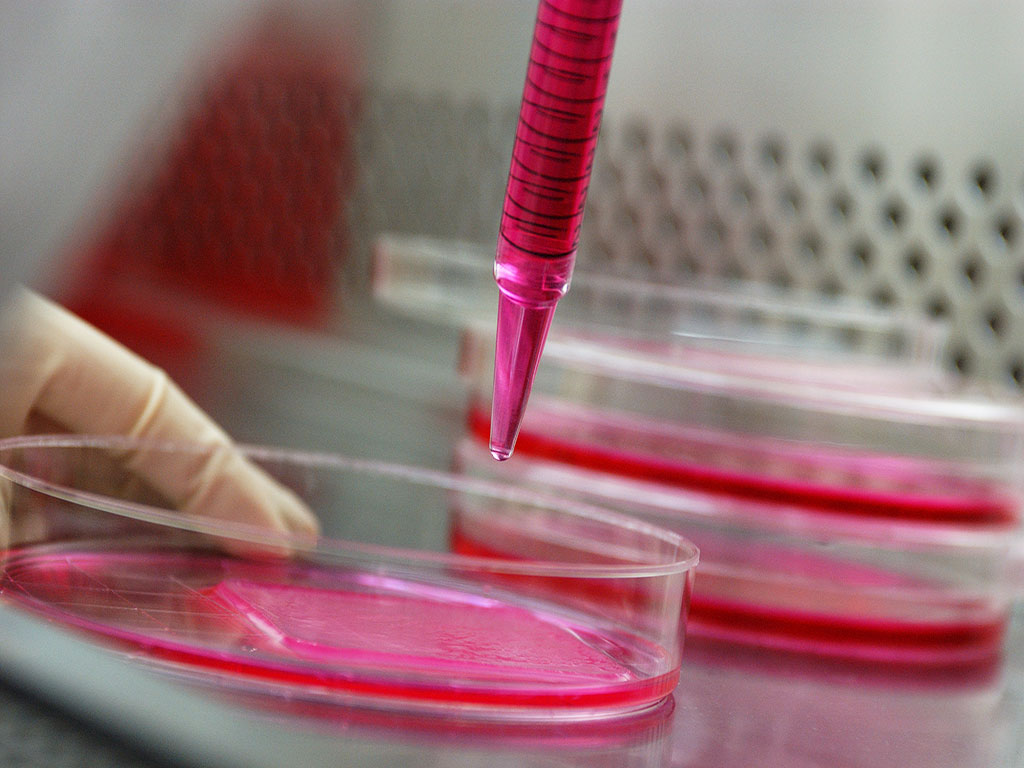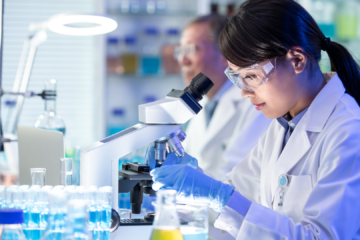Hair growth is a sophisticated physiological process influenced by intricate cellular and molecular mechanisms. Understanding the underlying physiological processes is essential for promoting effective hair growth. Within the realm of hair care, cosmetic ingredients play a vital role in directly enhancing and stimulating hair growth.
This article aims to provide a comprehensive exploration of the physiological mechanisms governing hair growth, as well as the mechanisms of action and validation methods used to assess the efficacy of cosmetic ingredients in this regard.
Physiological Mechanisms of Hair Growth
Here are some of the main mechanisms involved in hair growth:
Hair Cycle
Hair goes through a growth cycle consisting of three main phases: anagen (active growth phase), catagen (transition phase), and telogen (resting phase). During the anagen phase, cells in the hair matrix at the hair root divide rapidly, resulting in hair growth. The duration of this phase determines the maximum hair length. After the anagen phase, the hair enters the catagen phase, where growth stops and the dermal papilla contracts. Finally, the hair enters the telogen phase, where it rests before falling out and being replaced by new, growing hair.
Dermal Papilla
The dermal papilla is a structure located at the base of the hair follicle. It plays a crucial role in hair growth by providing nutrients and oxygen to the hair matrix cells. The dermal papilla contains blood vessels that carry nutrients and hormones essential for hair growth. In addition, she is also responsible for releasing growth factors that stimulate the activity of hair matrix cells.
Hair Matrix Cells
Hair matrix cells are stem cells located at the hair root, just above the dermal papilla. These cells have the ability to divide and differentiate into specialized hair cells. During the anagen phase of the hair cycle, cells in the hair matrix multiply and push older cells toward the surface of the scalp, resulting in hair growth.
Vascularization
Adequate vascularization is essential for hair growth. Blood vessels supply nutrients, oxygen, and hormones to cells in the capillary matrix and the dermal papilla. In addition, vascularization also helps remove metabolic waste from hair cells, maintaining a healthy environment for hair growth.
Hormones
Several hormones play an important role in hair growth. For example, testosterone and its derivatives such as dihydrotestosterone (DHT) have significant effects on hair growth. In some people, the sensitivity of the hair follicles to DHT can lead to miniaturization of the follicles, resulting in gradual hair loss.
Growth Factors
Several growth factors, such as fibroblast growth factor (FGF), platelet-derived growth factor (PDGF), and vascular endothelial growth factor (VEGF), play an important role in hair growth. These growth factors stimulate the proliferation and differentiation of hair cells, promoting hair growth.
Mechanisms of Action of Cosmetic Ingredients
Cosmetic ingredients can act in different ways on the scalp and hair follicles to stimulate hair growth, for example by stimulating blood circulation and the hair growth cycle, inhibiting the enzyme 5-alpha-reductase, nourishing and strengthening hair follicles, reducing inflammation of the scalp, stimulating Angiogenesis, Protein B-catenin activity and Cell incorporation and proliferation. In this article, we will focus on the last three.
Angiogenesis in HHDPCs (Human Hair Dermal Papilla Cells):
Angiogenesis refers to the formation of new blood vessels, which is essential for delivering nutrients and oxygen to hair follicles. Some cosmetic ingredients can promote angiogenesis in the scalp, stimulating the growth of new blood vessels. For example, ginseng extract and niacinamide are known for their vasodilator properties, which can increase blood flow to the scalp and promote angiogenesis.
B-catenin Protein:
The B-catenin protein plays an important role in hair cycle regulation and cell signaling. Cosmetic ingredients that stimulate the activity of the protein B-catenin can promote hair growth. For example, some plant extracts such as Polygonum multiflorum (fo-ti) and Centella asiatica are known to increase levels of B-catenin, which can stimulate the proliferation of cells in the dermal papilla and hair follicles.
Cell Incorporation and Proliferation:
Cell incorporation and proliferation are fundamental processes for capillary growth. Cosmetic ingredients can stimulate mitotic activity and proliferation of hair follicle cells, promoting hair growth. Some ingredients, like minoxidil, have the ability to prolong the anagen phase of the hair cycle, which means more hair follicles are actively growing. Additionally, certain plant extracts such as nettle extract and jojoba oil can provide nutrients and stimulate cell proliferation in hair follicles.
Efficacy Validation Methodologies
To validate the effectiveness of cosmetic ingredients in stimulating hair growth, several in vitro methodologies and techniques can be used. Here are some of the main ones:
Cell Proliferation Assays:
These assays evaluate the ability of the cosmetic ingredient to stimulate the proliferation of hair follicle cells. Colorimetric assays, such as the MTT (3-(4,5-dimethylthiazol-2-yl)-2,5-diphenyltetrazolium bromide) assay, or labeled nucleoside incorporation assays, such as the BrdU assay (5 -bromo-2′-deoxyuridine).
Cell Migration Assays:
These assays evaluate the ability of the cosmetic ingredient to stimulate the migration of endothelial cells or dermal papilla cells involved in angiogenesis and cell uptake. Wound assays (scratch assay) or Boyden Chamber assays (Boyden chamber) can be used, where cells are exposed to the cosmetic ingredient and their migration capacity is quantified.
Capillary Tube Formation Assays:
These assays evaluate the ability of the cosmetic ingredient to stimulate capillary formation by endothelial cells. Matrix gel assays (eg Matrigel) may be used where cells are cultured under conditions that favor the formation of blood vessel-like structures.
Gene and Protein Expression Assay:
These assays evaluate changes in the expression of genes and proteins related to angiogenesis, B-catenin protein, and cellular uptake in response to the cosmetic ingredient. Techniques such as RT-PCR (real-time polymerase chain reaction) can be used for the analysis of gene expression and Western blotting or immunofluorescence assays for analysis of protein expression.
Cell Signaling Assays:
These assays evaluate the activation of specific signaling pathways, such as the B-catenin protein pathway, in response to the cosmetic ingredient. Techniques such as reporter luciferase assays can be used, in which the activity of specific promoters is evaluated in response to the cosmetic ingredient.
The physiological mechanisms of hair growth are robust and cosmetic ingredients can play a significant role in promoting it. Using precise methodologies and techniques, as presented above, to validate this effectiveness is fundamental.
Crop Approach
Crop Biolabs is an integrated external R&D facility, specializing in a variety of preclinical and analytical services, external quality assessment, and phenotypic and molecular assays for cosmetic ingredients, cell-based therapeutics, pharmaceuticals, and sanitizing companies, in addition to providing claim substantiation and safety evaluations from discovery to regulation for new solutions and bespoke products.
Our mission is to collaborate with the technological maturation of products and developments in life sciences, either with a punctual service or with a complete R&D solution: from idea to impact.
Learn more about Crop Biolabs and get in touch. Let’s work together: https://cropbiolabs.com.br/
The New Generation of Preclinical Services
Author: Carolina Barizan, Biomedical Scientist – Marketing Analyst, Crop Biolabs




